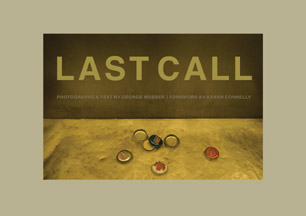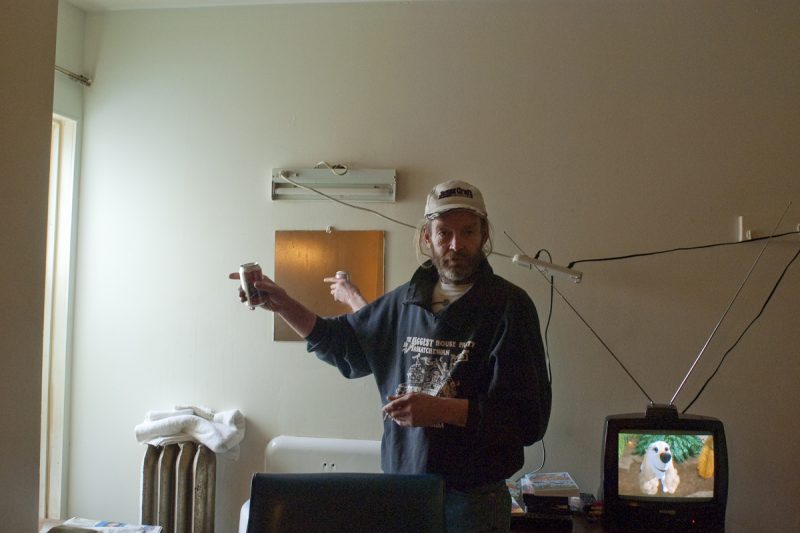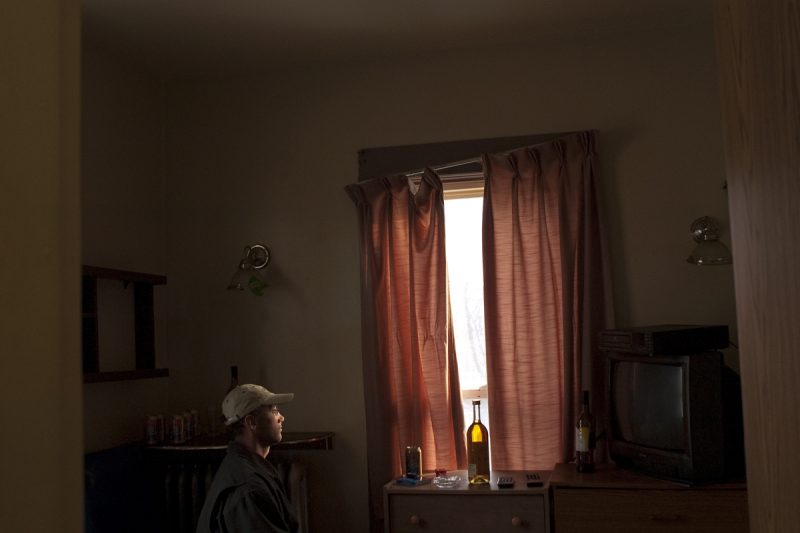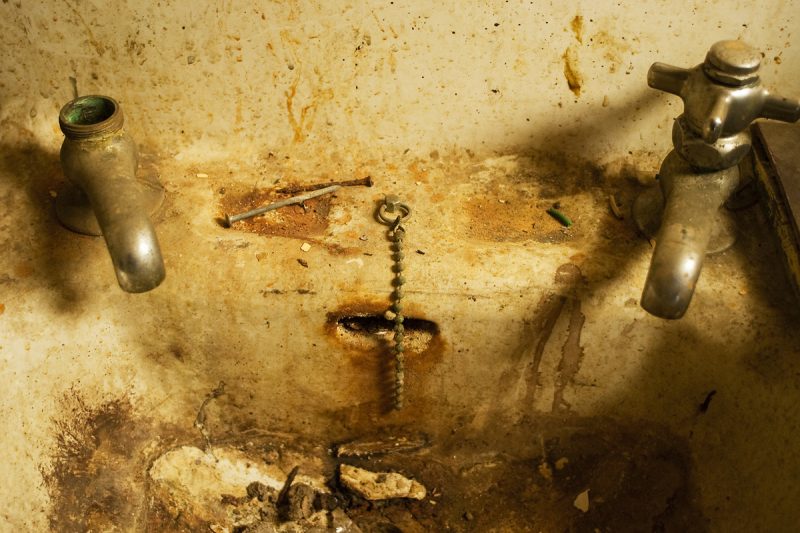I think of myself as a documentary photographer. Photography is a wonderful medium for harvesting up stories from the stuff of daily life.

2) You have a brand new book out entitled Last Call published by Rocky Mountain Books. What is the book about?
LAST CALL tells the story of the final years of Calgary’s notorious East Village, a feral little precinct situated smack behind Calgary’s cobalt blue city hall. The East Village was best known for its shabby hotels, the St Louis, King Edward and Cecil that formed an un-holy trinity and an affront to Calgary’s Mayor and many members of city council.
You went to the East Village if you needed a cheap room or you wanted to deal for booze, drugs or sex. Some nights you went in hopes of a long shot paying off.
Like the night a guy sitting at one of the back tables in The St Louis suggesting to his beer soaked buddy, a rumpled local TV news reporter that he might want to consider a
run for civic politics
Through heavy lidded eyes the reporter turned the idea over in his head.
His name was Ralph Klein. It wasn’t long before he was Alberta’s Premier.

3) How long did you work on that project? What were some of the challenges in creating the images.
I spent the years of 2004 – 2009 photographing in the East Village. The biggest challenge in this kind of work is winning the trust and respect of the people you wish to photograph. You have to earn it. That takes time.
4) You’ve photographed prairie towns for a long time, in fact you seem to have two separate bodies of work that focus on the subject. You’ve photographed disappearing towns, remnant of towns or even towns that no longer exist and the black white images while beautiful have a somber, at times sad feel to them. At the same time you’ve been photographing small town architecture in colour which seem to be perhaps more upbeat. Can you talk about these two projects and how they fit together?
The choice of black and white vs. colour is a matter of intuition, judgment and experience. Which one will be capable of conveying the subject most powerfully? Colour is closer to reality, capable of a kind of exquisite transcription. Black and white is more distanced from reality, more abstract, capable of a kind of poetry. The rich, allusive subject matter of these disappearing places calls out for both.
5) Your work in a number of your projects (Calgary’s East Village, Prairie towns, People of the Blood) has recorded, if not way of life, a least a slice of life that has vanished and/or changed dramatically. Do you feel drawn to this type of story or were you just interested in the subject and it all changed around you.
I have a powerful attraction to the sharpness and poignancy of endings. Life is so often about endings, about losing things….photography is about keeping them….for just a bit longer.
6) In contrast to your more recent projects one of your early documentaries, focusing on the Hutterites , featured a subject ( a conservative religious sect that clings to the past in many ways) that didn’t change. Can you talk about that?
A girlfriend once said to me, “You have an infinite appetite for inspiration.” She was right. Time with the Hutterites was filled with stories and lessons, most of them unspoken. You can learn a lot about courage, compassion and commitment from the Hutterite people. The fundamentals don’t really change much on a Hutterite Colony. That’s what make a day there so dear.
7) You exhibit your work as fine art on a regular basis and your style is most often referred to as documentary. Do you think there is any distinction between fine art and documentary photography?
Names like “Fine Art” and “Documentary” can be convenient ways to categorize photography but just exactly where would you put Eugene Atget, or William Eggleston, or Lee Friedlander, or Diane Arbus or August Sander? Their work can be said to have grown out of the Documentary tradition but it surely transcends that tradition and it stands as some of the most enduring and important art of the twentieth century. Photography is like a great river. It’s most powerful current is the documentary current.
8) Most photographers have routines when they work on a project. What are some of yours?
I like to photograph where it’s quiet, when there’s not much going on. That often means getting up early or staying out until the light’s all gone. I like to travel light, usually one camera with one lens. I like to hang out. I like to go back to the same place over and over again. I like to watch for the little changes.
9) You have exhibited a lot and have had numerous books published. Which is the greater challenge, getting a book published or arranging exhibitions?
I just try to do justice to the reality of the things that I photograph and care about. When I’ve completed a project I try to bring the work to the attention of curators and publishers. I’m very grateful for the support and encouragement I’ve received in recent years. Traditional book publishing is facing some challenges right now but you might also consider this a golden age in book publishing. The breadth and quality of work available now is extraordinary. The hard part isn’t getting the work published or exhibited. The hard part is creating work that deserves to be published or exhibited. Good work will always find an audience.
10) You teach some photography classes, what’s the attraction of teaching for you?
Energy, passion, commitment and decency are things that students can bring into the classroom. It doesn’t happen all the time. But when it does, it feels pretty good to be around.
To see a preview of Last Call, go to Youtube.com and type in Last Call by George Webber. You can see more of George Webber’s work here.


